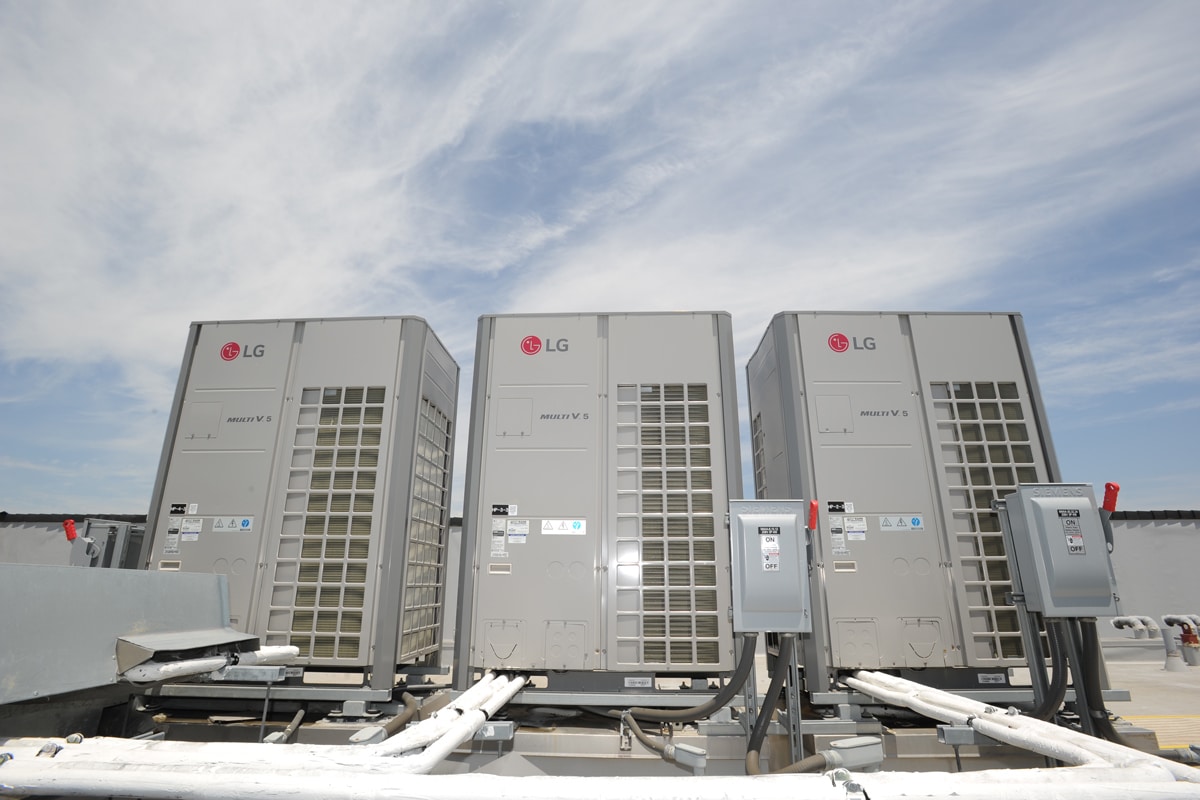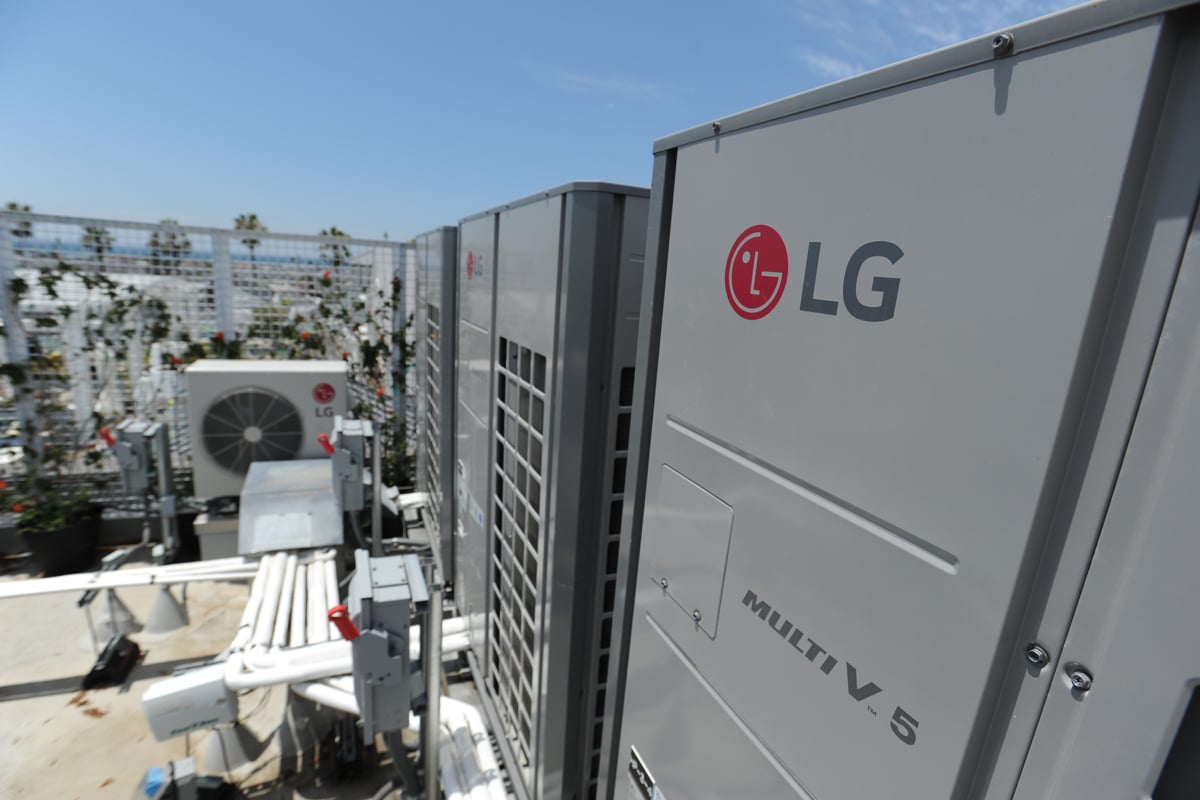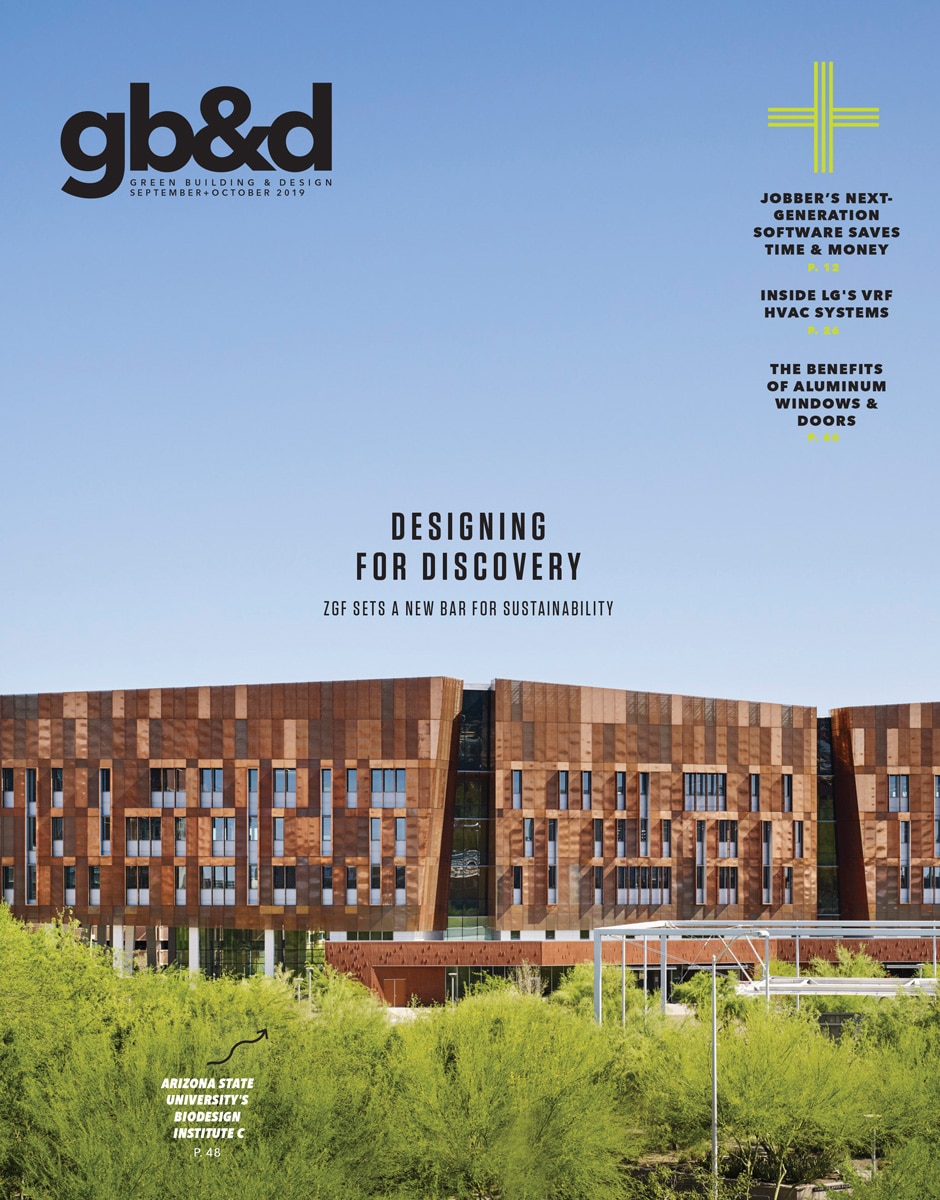
[Photos: Courtesy of LG VRF]

We interview VRF expert Chuck Hughes for a closer look at how variable refrigerant flow systems really make a difference.
At the heart of any building is its HVAC system—that essential collection of compressors, coils, fans, and controls that has such a hand to play in energy costs, air quality, and occupant comfort. LG Air Conditioning Technologies understands this, and when it comes to perfecting all three, it’s hard to beat their LG MULTI VTM VRF series.
VRF—or Variable Refrigerant Flow—systems differ from traditional HVAC solutions in a few key ways. Most importantly, their fans and compressors run on inverter motors attached to computerized control systems, meaning their speed can be precisely controlled. In essence, rather than merely flipping on and off like a typical AC unit, the inverter technology enables VRF systems to respond in real-time to changing conditions in a space and adapt accordingly.

[Photos: Courtesy of LG VRF]
To put that into perspective, imagine a time when you reached for your thermostat to shut off a blast of frigid air only to find the room too warm five minutes later. With a VRF’s smoother operations, such dilemmas are a thing of the past. “The big difference between traditional AC systems in the U.S. and a VRF is simply that the VRF is far more technologically advanced,” says Chuck Hughes, director of commercial sales for LG Air Conditioning Technologies. “It’s like the difference between a computer in the 1980s and a computer in 2016.”
But VRF systems are good for more than just improving occupant comfort—they also allow for much quieter operations and tremendous energy savings, Hughes says. It’s not difficult to understand why: Slam your foot down on your vehicle’s gas pedal and the engine will roar, but press it softly, and you’ll hear only a gentle hum. Moreover, when a motor spins more slowly, it consumes less power.
“Imagine a time when you reached for your thermostat to shut off a blast of frigid air only to find the room too warm five minutes later.”
VRFs can even use heat recovered from one room to warm another, an ability that makes for particularly energy-efficient operations in hospitality settings and multi-family housing. Imagine, for instance, a crowded hotel in the winter with a lobby that needs to be kept warm and a bustling kitchen in the back lined with hot stoves that need to be cooled. A VRF system is up to the task.
When it comes to pricing, VRF systems may initially appear more expensive, but when life-cycle energy savings and total building expenditures are taken into account, they quickly prove themselves to be the more affordable option. Take, for example, the construction costs incurred by a chilled water system, which requires heavy structural steel and concrete in order to support, or the ductwork utilized by a simple rooftop system, which can take up two to three feet of space between each floor of a building. By contrast, a typical refrigerant line used by a VRF is a mere two to three inches in diameter, allowing for significantly greater architectural flexibility. With the superior performance, comfort, and energy savings VRFs offer, Hughes says they’re a bit like the Ferraris of the HVAC world—streamlined, powerful, and flawlessly engineered.


